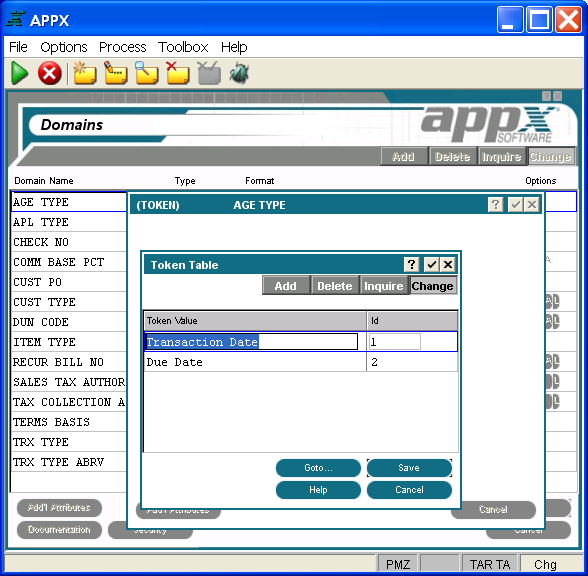
Token Domain Token Table
From the Token Domain overlay, the token table option accesses the Token Table overlay shown in Figure 2-3-14 below. A token table provides an alternative to the use of range checks for data token.
You can establish a token table for any Token domain in the data dictionary. The entries in the table are case-sensitive. If you enter a token value in all capital letters, an application user must enter the value in all capitals.

Figure 2-3-14. Token Domain Token Table Overlay
Token table operations are database-independent. They access a designer-defined table in application design, not data contained in a file in a database, for the range of possible values. As a result, a token does not vary from database to database. It is automatically available to, and exactly the same for, every database that is associated with an application.
The Token Table overlay contains the following fields:
· Token Value is the alphanumeric value associated with a token ID. APPX automatically translates between token values and ID's whenever necessary. This entry is case-sensitive. If entered in capital letters, an application user must also enter the value in capital letters. Also, token values newly added to the data dictionary are not available to a current APPX user until the user exits and re-enters APPX.
· ID displays a unique number that is defaulted by APPX. This specification establishes the binary value that APPX stores in place of the associated token value. APPX assigns the first token value an ID of 1, with additional values assigned an ID that is equal to the highest existing ID plus 1. The default can be overridden, but must be unique within a table. APPX does not require that ID's be contiguous within a table.